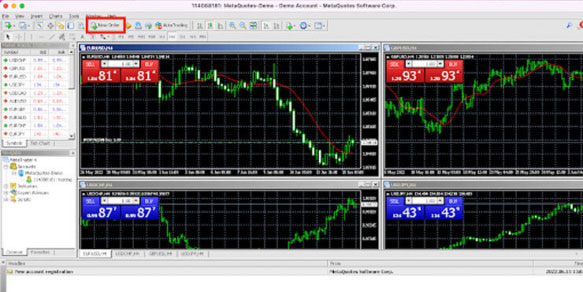
Crude oil futures are sold in the US through the NYMEX market in New York, run by CME Group. The CL (Crude Oil Futures Contract), which represents 1,000 barrels of oil, and the QM (E-mini Crude Oil Futures Contract), which means 500 barrels of oil, are two of the most traded crude oil contracts. The E-mini contracts vary in $0.025 increments on an exchange, while the CL price moves in $0.01 increments. The minor price movement a futures contract can make is known as a "tick," and these increments are known as such. You can calculate your profit or loss by counting ticks while buying or selling a futures contract.
Minimum Trading Amounts for Futures
Your futures broker will determine how much money you need in your account to day trade a crude oil futures contract, but you should budget at least $1,000. Remember that you'll need enough money in history to cover potential losses. You could only risk $10 for each trade if you chose not to risk more than 1% of your capital on any given transaction. Initial margin and maintenance margin requirements may apply if you don't shut out all your open positions by the end of the trading day. When trading on margin, the entire balance serves as collateral. Suppose you don't quickly deposit the money needed to satisfy those margin requirements. In that case, your brokerage may decide to sell your assets.
Minimum Trading Amounts for ETFs

According to U.S. law, "pattern day traders" are those who open and finish positions on the same day at least four times each week. They are required to keep margin account balances of at least $25,000 for stocks and ETFs. To engage in day trading in any meaningful capacity, you need at least $25,000 in liquid assets at your disposal. Individual brokerages may impose additional criteria on top of that. In addition to this requirement, the amount of capital you need to day trade a crude oil exchange-traded fund (ETF) depends on the price of the ETF, the size of your position, and whether or not you trade using leverage (using borrowed money).
Crude Oil Trading: A Volatile Market
Keep in mind that the oil market might sometimes be unstable. The oil market reached record lows in April 2020. As a point of comparison, the oil ETF USO traded for around $4.66 on April 14, 2020. To boost net asset value per share and reduce the number of shares outstanding, USO performed a 1-for-8 reverse stock split at the close of business on April 28, 2020, two weeks later.7 On May 1, 2020, USO closed for $18.86 per share. Before investing in oil, or any industry-specific fund for that matter, use caution and carefully weigh all of the risks since there is a low oil demand, and it is unlikely that prices will return to where they were in 2019 by the end of 2020.




